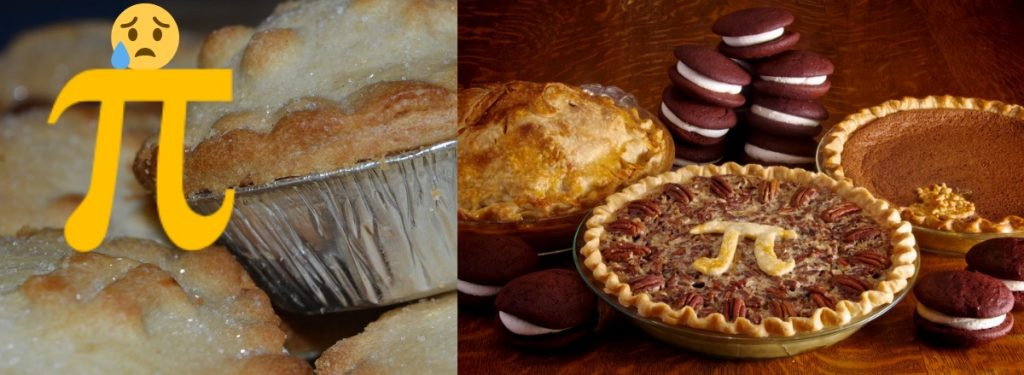One could parody Robert Frost’s famous statement about poetry (“Poetry is what gets lost in translation”) by saying – “the beauty of Mathematics is what gets lost in memorization”.

Today (March 14th) is celebrated as the ‘Pi day’ within the academic circles around the world (yes, a day dedicated just for that famous number!) . If you haven’t guessed already, the day was picked from the date in the mm/dd format (3/14), which carries the digits of the most popular approximation (3.14) of the value of Pi.
Pi is one of the most remarkable numbers that we know of. It is only appropriate that we have a day every year dedicated to it so that we can appreciate the profound implications this number has on the several phenomena around us. (Note: we had posted an article named The chronicle of Pi on the unique qualities of Pi in one of the earlier issues of this blog)
Pi day celebrations were first organized in the US in 2009 and has caught up since then. The activities for this celebration typically involve Math-based challenges and games involving Pi. But probably the most popular ritual for the day is baking pies (of course, circular ones) with the Greek symbol of Pi carved on them. Another favorite pastime for the Pi enthusiasts, it seems, is to compete to memorize the most number of digits in the value of Pi. The record for this apparently stands at 70,030 digits memorized! Massachusetts Institute of Technology (MIT) has also jumped into the bandwagon and decided to have their admission decisions announced on the Pi day of every year.
If I were Pi, I would be a bit disappointed with these celebrations. Though the attention and awareness are great, it would have been better if the rituals were based on something more substantial than just a homophone of the name (admittedly, people would any day look for an excuse to bake, sell and enjoy pies – rather than think Math). As if to rub it in, the Newsweek magazine even published an article ‘explaining’ the difference between Pi and Pie 🙂 (Note: This is somewhat similar to, say, celebrating Gandhi’s birthday with candy eating competitions).
The digit memorization game definitely sounds better and may help generally with enhancing the memory power. But the sprit of Math and especially that of Pi is antithetical to this. One could parody Robert Frost’s famous statement about poetry (“Poetry is what gets lost in translation”) by saying – “the beauty of Mathematics is what gets lost in memorization”.
Of course, there have also been more serious attempts to celebrate Pi day. For example, last year NASA had organized a National Pi Day challenge with several problems involving Pi. These are serious problems, though may be only for advanced Math students.
Meanwhile, there are also a couple of debates among the Math community about two other days that some feel should be celebrated along with (or even instead of) the Pi day. The first one is the ‘Pi approximation day’ – which denotes an old rational number approximation for Pi (= 22/7). If you didn’t guess – July 22nd is the proposed date. A problem with this is the implication that the value associated with the current Pi Day (3.14) is not an approximation – which is quite wrong. Both these values (3.14 and 22/7) are approximations – just that the former is a slightly better approximation than the latter. The other proposal is to use another number Tau instead of Pi. Tau is simply Pi multiplied by 2 – i.e., 6.28 (and the proposed date being June 28th). The argument (eg: see this article) is that Tau is more natural in representing the circle ratio than Pi and when Tau is used in the equations and expressions, they would be a lot more elegant and natural. This observation is true and when the equations and formulae become simple, they also would be a lot more intuitive. MIT has also decided to please this camp by further specifying their admission decisions to be on Pi day, Tau time (Mar 14th, 6:28PM). But frankly, this whole debate is very cosmetic in my opinion.
One really interesting activity that ties the spirit of Pi with fun is a brilliant experiment suggested by Gregory Galperin in 2003 (also known as Galperin’s Billiards) that would calculate the digits of Pi. For this, Galperin considers the a configuration as in the picture below. We have two billiard balls constrained to roll along a line bounded at one end by a wall. To begin, the left hand ball L, of mass {m}, is stationary and the right hand ball R, of mass {M}, moves rapidly towards it. All impacts — whether ball/ball or ball/wall — are perfectly elastic. In ball/ball collisions the total momentum is conserved while in ball/wall impacts the momentum of L changes sign but keeps its numerical value. The energy is conserved in all collisions.

Galperin proved the remarkable result that the total number of hits or impacts, counting both ball/ball and ball/wall collisions, gives the most significant digits of Pi. The ratio of the masses of the two balls determines how many accurate digits are produced. You can read the original paper with all the details of this experiment here. The remarkable thing about this experiment is that it is deterministic (not statistical) and can be recreated as long as the collisions are elastic. This is a great experiment that can be staged, demonstrated, discussed and watched (either physically or using a computer program) for the day.
On a slightly different note (also articulated in the earlier post), for any change or journey, Pi represents an ideal or a perfect target state that one can strive to achieve (eg: a perfect circle in the transformation of a square to a circle). Thus for any thing, its Pi could represent the target of its journey – the purpose or the Nirvana.
So anyone looking for a fitting greeting for this Pi day could try “may you discover your own Pi (purpose)!”.
Sankar is the founder and CEO of Silver Pi.
He had worked in Banking and Technology for about three decades before switching to Education. He is an Electrical Engineer by training, with a career in Technology and Banking across Japan, USA, Singapore and India.


3 comments